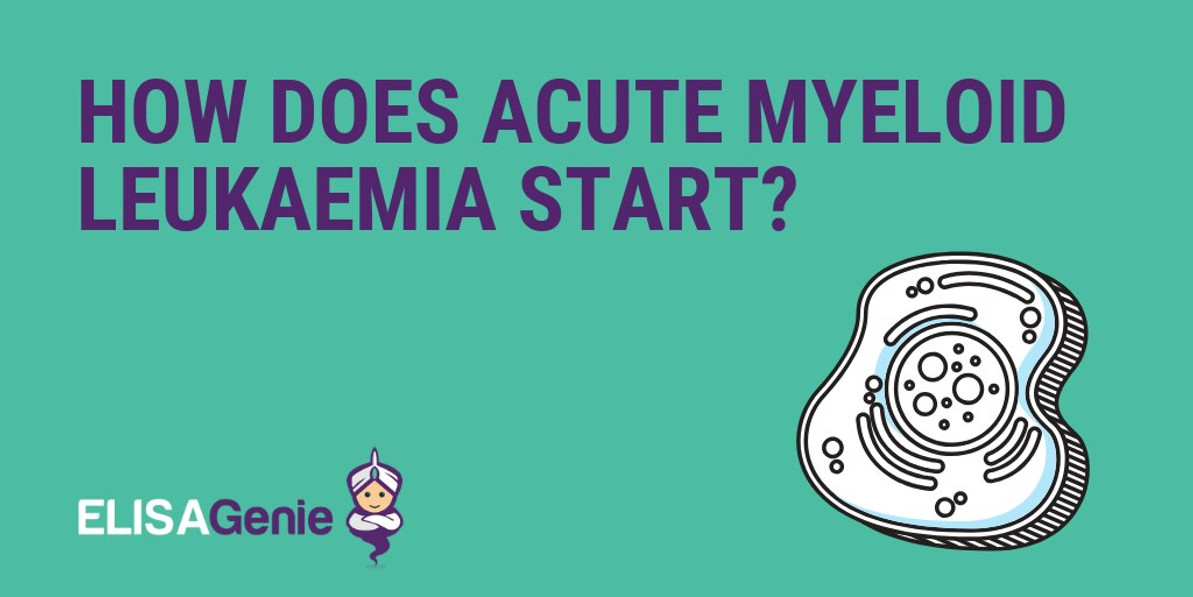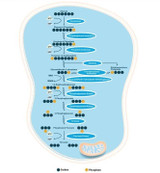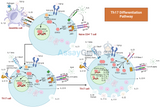How does Acute Myeloid Leukaemia start?
I have been in the situation that I’m sure many of us have. I work on genes, which if you name to any right-minded individual, sound like a random string of nonsensical gibberish. So, maybe unsurprisingly, I have very little interest in writing a blog piece only about the particular genes I work on, so let’s look at AML in a wider context (and then maybe I’ll sneak in my research later).
Acute myeloid leukaemia (or AML as it is more commonly known), is the most common form of acute leukaemia in adults (Eriksson et al. 2015). This disease involves the uncontrolled accumulation of progenitors, that give rise to myeloid-type white blood cells, within the bone marrow. The accumulation of these progenitors eventually leads to a failure to replenish blood cells, which results in death (Corces-Zimmerman et al. 2014).
While the treatment for AML is generally quite effective and patients will often go into remission, the probability of relapse is incredibly high. In reality, patients are only given a 20% chance of surviving 5-years (Public Health England 2014).
It started out with a blip, how did it end up like this?
One of the most interesting things about AML is the fact that the number of driver mutations which occur in a single patient is relatively low, and many are mutations that are consistently seen reoccurring (Kandoth et al. 2013). Those mutations that we do see also seem to follow an interesting pattern.
Deep sequencing of bone marrow samples has allowed for the identification of small clonally-derived populations, where the cells are infrequent enough they would not be counted as cancer (Genovese et al. 2014). These clones repeatedly contain mutations in epigenetic modifiers. The fact these small clonal-populations exist and relapse patients often include the same epigenetic modifier mutations as when they originally presented, suggest that these are some of the first cancerous mutations to occur.
The current theory suggests that these early mutations provide a small self-renewal advantage in preleukemic clones, but this is not enough to definitively lead to cancer, and the secondary hits are then required. This allows us to start building a framework for leukaemia progression (Sperling et al. 2016).
The presence of these residual pre-leukemic clones could be an important factor in relapse (Corces-Zimmerman et al. 2014), so I firmly believe that it is essential we develop a better understanding of the requirements for the progression of preleukemic clones into full blown leukaemia. To do this we need to understand the epigenetic changes that take place and how these produce an environment where the secondary hits can provide a competitive advantage. The situation is by no means clear, however.
The complexity of the Initial Mutations
Three of the main affected epigenetic modifiers are DNMT3A and IDH1/IDH2 (Cancer Genome Atlas Research Network 2013). Now, mutations in all of these cause large scale epigenetic modifications – in completely opposite ways. DNMT3A is a protein which methylates cytosines, and the mutations in this gene normally act as a loss of function leading to a hypomethylation phenotype (Hájková et al. 2012).
The IDH proteins, however, produce a metabolite needed for the activation of epigenetic modifiers, such as TET2 (another gene which is frequently mutated). TET2 typically acts to remove cytosine methylation. IDH mutants gain a novel function where they produce a metabolite that competes with the normal metabolite, so the epigenetic modifiers cannot be activated (Losman et al. 2013). These mutations then lead to a hypermethylation phenotype (Figueroa et al. 2014).
Both of these mutations result in opposed methylation phenotypes, yet the leukaemias that form share similar secondary hits, suggesting that despite theoretically being completely contradictory, they act to produce a similar effect.
What I look into
So, at this point, I should probably introduce my research. We have identified a novel miRNA mutation that co-occurs with the IDH mutations.
miRNAs are small RNAs that act through complementary base pairs, targeting mRNA transcripts which contain complementary sequences, and leading to their inhibition and destruction. This gives us a great opportunity, as while miRNAs have a vast number of potential targets, they can be well defined in a far more accessible way than protein-protein interactions.
We are investigating this miRNA mutation, alongside the more commonly co-occurring mutations, to try and identify how the secondary hits allow the development from a preleukemic state to leukaemia, by looking at common targets.
References
Cancer Genome Atlas Research Network, 2013. Genomic and epigenomic landscapes of adult de novo acute myeloid leukemia. The New England journal of medicine, 368(22), pp.2059–74. Available at: http://www.pubmedcentral.nih.gov/articlerender.fcgi?artid=3767041&tool=pmcentrez&rendertype=abstract.
Corces-Zimmerman, M.R. et al., 2014. Preleukemic mutations in human acute myeloid leukemia affect epigenetic regulators and persist in remission. Proceedings of the National Academy of Sciences, 111(7), pp.2548–2553. Available at: http://www.pnas.org/cgi/doi/10.1073/pnas.1324297111.
Eriksson, A., Lennartsson, A. & Lehmann, S., 2015. Epigenetic aberrations in acute myeloid leukemia: Early key events during leukemogenesis. Experimental Hematology, 43(8), pp.609–624. Available at: http://linkinghub.elsevier.com/retrieve/pii/S0301472X15001915.
Figueroa, M.E. et al., 2014. Leukemic IDH1 and IDH2 Mutations Result in a Hypermethylation Phenotype, Disrupt TET2 Function, and Impair Hematopoietic Differentiation. Cancer Cell, 18(6), pp.553–567.
Genovese, G. et al., 2014. Clonal hematopoiesis and blood-cancer risk inferred from blood DNA sequence. The New England journal of medicine, 371(26), pp.2477–87. Available at: http://www.ncbi.nlm.nih.gov/pubmed/25426838%5Cnhttp://www.nejm.org/doi/abs/10.1056/NEJMoa1409405.
Hájková, H. et al., 2012. Decreased DNA methylation in acute myeloid leukemia patients with DNMT3A mutations and prognostic implications of DNA methylation. Leukemia Research, 36(9), pp.1128–1133.
Kandoth, C. et al., 2013. Mutational landscape and significance across 12 major cancer types. Nature, 503(7471), pp.333–339. Available at: http://dx.doi.org/10.1038/nature12634.
Losman, J. et al., 2013. (R)-2-Hydroxyglutarate is Sufficient to Promote Leukemogenesis and its Effects are Reversible. , 339(6127).
Public Health England, 2014. National Cancer Intelligence Network Trends in incidence and outcome for haematological cancers in England : About Public Health England. Public Health England, pp.1–84. Available at: www.ncin.org.uk/view?rid=2818.
Sperling, A.S., Gibson, C.J. & Ebert, B.L., 2016. The genetics of myelodysplastic syndrome: from clonal haematopoiesis to secondary leukaemia. Nature Reviews Cancer, advance on(1), pp.5–19. Available at: http://www.nature.com/nrc/journal/vaop/ncurrent/abs/nrc.2016.112.html%5Cn
Recent Posts
-
Biological Role of GLP-1
Glucagon-like peptide-1 (GLP-1) is a critical hormone in the regulation of glucose met …20th Jun 2024 -
Th17 Cell Differentiation: Insights into Immunological Dynamics
Th17 cells, a subset of T helper cells characterized by their production of interleukin-17 (IL- …25th May 2024 -
Assay Genie New Asian Distributor May 2024
Dublin, Ireland — May 20th 2024 — Assay Genie, a leading supplier of ELISA Kits, Ant …19th May 2024




